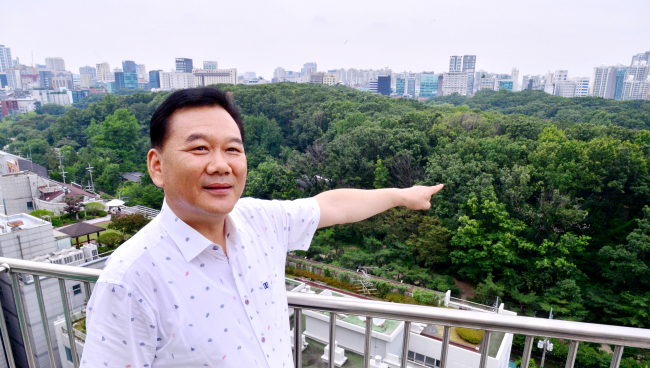While doubt may prevail toward the pseudoscience, some Korean entrepreneurs and politicians have taken to consultants to make the most of a Korean equivalent to China��s feng shui to decide where to live, where to start a business or where to bury the dead.
To them, finding an auspicious site has been deemed an essential bid to evade the narrowest chances of bad luck and pursue prosperity.
But it has been largely taboo, even among enthusiastic clients, to officially recognize pungsu jiri as valid grounds for the decisions. The results of the counseling -- and its cost -- are usually kept under wraps between counsellor and client.
In China, with its 3,500-year history of feng shui theory, the ruling Communist Party officially prohibits ��superstitious�� practices including geomancy.
This comes in contrast to Westerners�� openness to feng shui practitioners and enthusiasts. One example is US President Donald Trump, who as a real estate tycoon worked with Chinese feng shui masters for decades.
 |
| Veteran geomancy consultant Jeon Hang-soo (Park Hyun-koo/The Korea Herald) |
To achieve the globalization of pungsu jiri, the veteran consultant who also heads the Hankook Poongsoo Jiri Research Institute called for the nation to bring to light a set of geomancy theories formed over 1,200 years here.
The first step the government can take is to embrace pungsu jiri as a branch of knowledge, so that the subject is taught in academic institutions here.
��For the sake of a circumstance to improve and develop homegrown geomancy theory through research, Korea��s Ministry of Education should designate pungsu jiri as an academic discipline,�� he said. The Education Ministry recognizes over 13,000 academic disciplines for four-year universities, as of 2017.
To the 61-year-old, the hybridity of pungsu jiri, compared to feng shui, gives the Korean theory the upper hand in the race to promote geomancy to the world.
In addition to a mixture of feng shui from China and folk religions and dowsing technique here, a developing set of pungsu theory is increasingly suitable for an era to urbanization, he said.
��Obviously in the past, geomancy theory applied in (high-rise) buildings was nonexistent,�� he said. ��Overcoming poverty after the end of the Japanese colonization and Korean War, people began to be in search of fortune in a place for residence.��
For example, if a building stands in front of a taller one in a city, the taller one corresponds to a mountain range, believed to influence an energy flow of dwellers.
Moreover, Jeon��s own set of geomancy theory for interior design centers on a pursuit of harmony of what features in a room, including colors, lights and objects like plants or mirrors.
 |
| Veteran geomancy consultant Jeon Hang-soo poses with an ancient compass used for divination. (Park Hyun-koo/The Korea Herald) |
Over three decades since then, he has had a track record of consulting for builders like Hanwha Engineering & Construction, Daewoo Engineering & Construction and Samsung C&T, as well as financial firms like KEB Hana Bank, KB Kookmin Bank and Mirae Asset.
��Especially the financial industry finds it very sensitive when orienting a building, because it is a matter of money flow and a matter of survival,�� Jeon said.
Jeon is the author of eight books, including one in its third edition about geomancy application in interior designs.
According to Jeon, there are reasons to believe geomancy works beyond cultural or spiritual phenomenon.
��(Geomancy) is said to be a pseudoscience because there are no statistics,�� he said. ��In fact, geomancy offers practical and scientific ways for a pursuit for harmony and well-being in human life.��
 |
| A photo of dried soil referred to as ��mud of acupunctural point,�� which Jeon Hang-soo explained only exists in auspicious sites. (Park Hyun-koo/The Korea Herald) |
��One of my disciples, a retired science teacher, said it was hard to understand why he feels mysteriously comfortable in the auspicious site, found in a different method than what he had pursued for a lifetime,�� Jeon said, referring to one of his eight disciples with ages ranging from their 30s to their 60s.
By Son Ji-hyoung (consnow@heraldcorp.com)






















